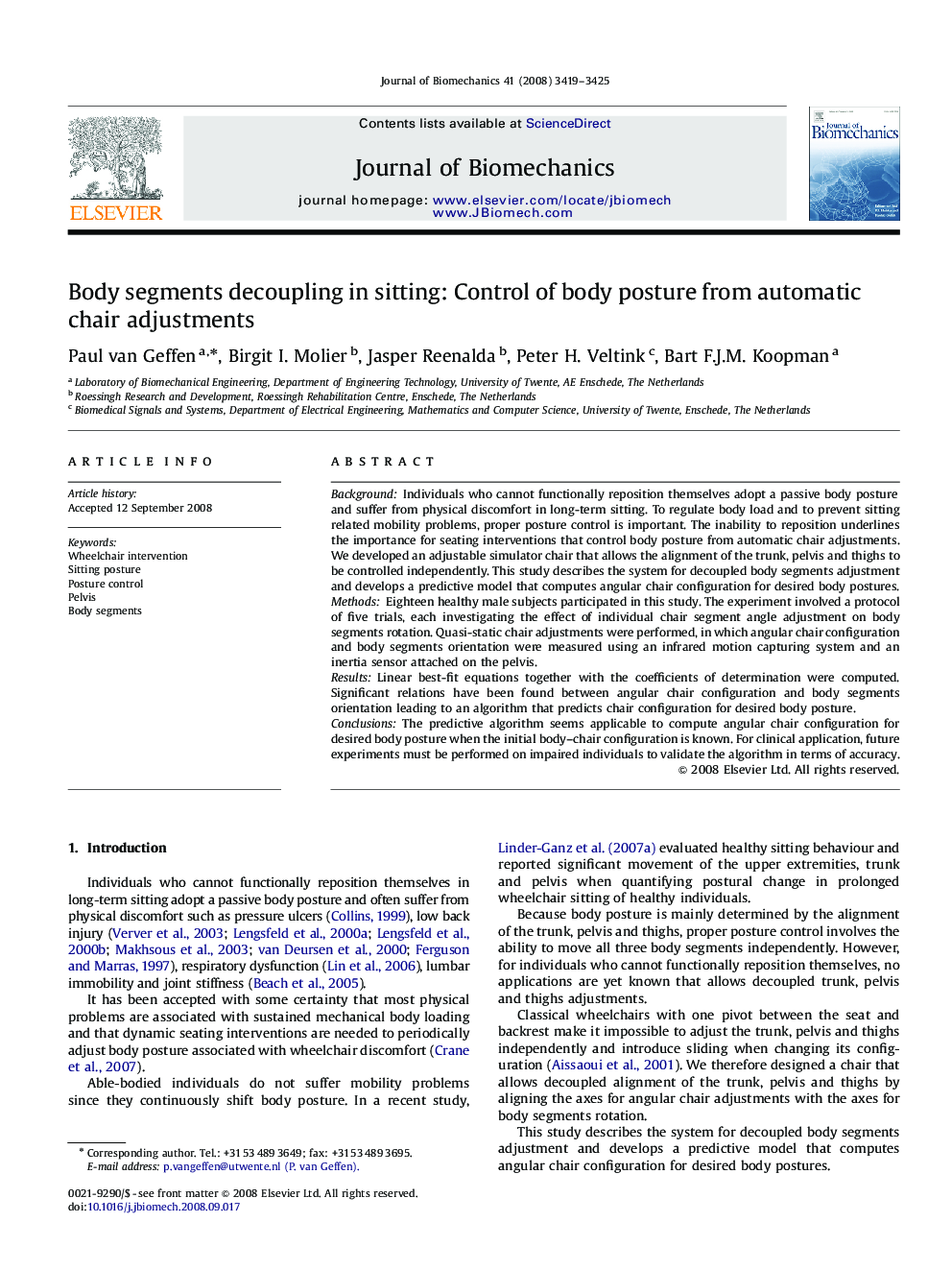| Article ID | Journal | Published Year | Pages | File Type |
|---|---|---|---|---|
| 874722 | Journal of Biomechanics | 2008 | 7 Pages |
BackgroundIndividuals who cannot functionally reposition themselves adopt a passive body posture and suffer from physical discomfort in long-term sitting. To regulate body load and to prevent sitting related mobility problems, proper posture control is important. The inability to reposition underlines the importance for seating interventions that control body posture from automatic chair adjustments. We developed an adjustable simulator chair that allows the alignment of the trunk, pelvis and thighs to be controlled independently. This study describes the system for decoupled body segments adjustment and develops a predictive model that computes angular chair configuration for desired body postures.MethodsEighteen healthy male subjects participated in this study. The experiment involved a protocol of five trials, each investigating the effect of individual chair segment angle adjustment on body segments rotation. Quasi-static chair adjustments were performed, in which angular chair configuration and body segments orientation were measured using an infrared motion capturing system and an inertia sensor attached on the pelvis.ResultsLinear best-fit equations together with the coefficients of determination were computed. Significant relations have been found between angular chair configuration and body segments orientation leading to an algorithm that predicts chair configuration for desired body posture.ConclusionsThe predictive algorithm seems applicable to compute angular chair configuration for desired body posture when the initial body–chair configuration is known. For clinical application, future experiments must be performed on impaired individuals to validate the algorithm in terms of accuracy.
